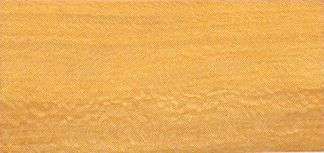
Bogabog (Xymalos monospora)
Family: Monimiaceae
Common names: Bogabog, Chebanatit, Dimu, Kiptassi, Kiptelde, Lemon, Lemonwood, Limoenhout, Mburuno, Mburvno, Mfuru, Mkaliakisumu, Muako, Munyamazhanhi, Murendetti, Muvheti, Nyagazani, Omuhotora, Serweriet, Umveti, Wild lemon
Distributed in: Burundi, Kenya, Nigeria, Rwanda, South Africa, Tanzania, Uganda, Zaire, Zimbabwe (Africa)
Common uses: Agricultural implements, Beehives, Boxes and crates, Brush backs & handles, Cabinetmaking, Carvings, Flooring, Flooring: industrial heavy traffic, Furniture, Joinery, Light construction, Millwork, Moldings, Plywood, Poles, Posts, Pulp/Paper products, Railroad ties, Toys, Turnery, Vehicle parts
Tree size: Trunk diameter is 150-200 cm
Colors: the heart isYellow, Yellow to golden-yellow to orangeand the sapwoodSame as heartwood, Yellow.The grain isStraight, the textureMedium
Natural durability: Susceptible to attack from termites (Isoptera), Susceptible to insect attack
Kiln Schedules: UK=A US=T2D4/T2D3 Fr=1
Kiln Drying Rate: Naturally dries slowly
Drying Defects: Moderate surface checking, Splitting
Ease of Drying: Slowly
Tree Identification: Bole/stem form is buttressed
Blunting Effect: Moderate
Boring: Fairly easy to very easy
Cutting Resistance: Easy to saw
Gluing: Fairly Easy to Very Easy
Mortising: Very Good to Excellent
Moulding: Very Good to Excellent
Movement in Service: Very Good to Excellent
Nailing: Holds nails well, Very Good to Excellent
Planing: Very Good to Excellent
Resistance to Impregnation: Sapwood is moderately resistant
Resistance to Splitting: Good
Response to hand tools: Easy to machine
Turning: Very Good to Excellent Results
Polishing: Very Good to Excellent; Varnishing: Very Good to Excellent;
- Numerical data Metric
- Numerical data English
- Strength properties
- References
 |
 |
 |
 |
| Item |
Green |
Dry |
Metric |
| Specific Gravity |
|
|
|
| Density |
|
560 |
kg/m3 |
| Bending Strength |
429 |
674 |
kg/cm2 |
| Crushing Strength |
275 |
449 |
kg/cm2 |
| Hardness |
|
451 |
kg |
| Impact Strength |
|
71 |
cm |
| Shearing Strength |
|
109 |
kg/cm2 |
| Stiffness |
83 |
97 |
1000 kg/cm2 |
| Tangential Shrinkage |
|
|
% |
| Radial Shrinkage |
3 |
|
% |
| Weight |
544 |
432 |
kg/m3 |
| Maximum Load |
|
|
cm-kg/cm3 |
| Toughness |
|
|
cm-kg |
| Static Bending |
|
|
kg/cm2 |
|
 |  |  |  | | Item | Green | Dry | English | | Bending Strength | 6111 | 9589 | psi | | Density | | 35 | lbs/ft3 | | Hardness | | 995 | lbs | | Impact Strength | | 28 | inches | | Maximum Crushing Strength | 3916 | 6397 | psi | | Shearing Strength | | 1560 | psi | | Stiffness | 1188 | 1383 | 1000 psi | | Weight | 34 | 27 | lbs/ft3 | | Radial Shrinkage | 3 | | % | | Tangential Shrinkage | 7 | | % | |
Max. crushing strength = medium
Bending strength (MOR) = low
Shearing strength (parallel to grain) = low
Hardness (side grain) = soft
Shrinkage, Radial = very small
Shrinkage, Tangential = fairly large
Density (dry weight) = 31-37 lbs/cu. ft.
Toughness-Hammer drop (Impact Strength) = low
Modulus of Elasticity (stiffness) = very low
Modulus of Elasticity (stiffness) = low
Shrinkage, Tangential = very small
Shrinkage, Tangential = small
Shrinkage, Tangential = moderate
Shrinkage, Radial = small
Shrinkage, Radial = moderate
Density (dry weight) = 38-45 lbs/cu. ft.
Shrinkage, Tangential = large
Shrinkage, Radial = large
Shrinkage, Radial = fairly large
Banks, C.H., Schoeman, J.P., Otto, K.P.,1977,The Mechanical Properties of Timbers with particular reference to South,Africa,South African Forestry Research Institute Bulletin,(Ed.,Schoeman, J.P. 1973 & Otto K.P. 1976,No.48Banks, C.H.,1954,The Mechanical Properties of Timbers with Particular Reference to those,grown in the Union of South Africa,Journal of the South African Forestry Association,No. 24 pp.44-65,[South,African Forestry Journal]Battiscombe, E.,1926,A Descriptive Catalogue of some of the Common Trees and Woody Plants of,Kenya Colony,Crown Agents for the Colonies LondonBois, P.J.,1966,The Strength Properties of Tanzania Timbers,Tanzania Forest Div. Util. Sec. Moshi Tech. Note, No.35Bolza, E., Keating, W.G.,1972,African Timbers - the Properties, Uses and Characteristics of 700 Species,C.S.I.R.O. Div. of Building ResearchBrenan, J.P.M., Greenway, P.J.,1949,Check-lists of the Forest Trees and Shrubs of the British Empire,Imperial Forestry Institute, Oxford No.5 Tanganyika Territories Part 2Bryce, J.M.,1967,Commercial Timbers of Tanzania,Tanzanian Forestry Division Util. Sec. MoshiEggeling, W.J.,1940,Indigenous Trees of Uganda,Govt. Printer Entebbe UgandaGoldsmith, B., Carter, D.T.,1981,The Indigenous Timbers of Zimbabwe,Forestry Commission, Zimbabwe Research Bulletin No.9Murira, K.,1984,Natural Durability Tests of Tanzanian Timbers 1955 - 1982,Tanzania Forestry Research Institute, Timber Utilisation Research Centre,,Moshi.Scott, M.H.,1935,Weights of South African Growth Timbers,South African Department of Agriculture and Forestry Bulletin,No.145,Forest Products Institute, Forestry Series No.1Scott, M.H.,1953,Utilisation Notes on South African Timbers,South African Forestry Department Bulletin No.36Sim, T.R.,1921,Native Trees of South Africa,Union of South Africa Department of Mines and Industries Memoir No.3Takahashi, A.,1978,Compilation of Data on the Mechanical Properties of Foreign Woods (Part,III) Africa,Shimane University, Japan, Research Report on Foreign Wood No. 7Tanzania Forest Department,1966,Xymalos monospora (lemonwood.mburuno,Tanzania Forest Div. Util. Sec. Moshi - Timbers of TanganyikaUganda Forest Department,1954,The Mechanical Properties of some Ugandan Timbers,Uganda Forest Department Timber Leaflet,No.1Wimbush, S.H.,1950,Catalogue of Kenya Timbers,Govt. Printer Nairobi Kenya
|








